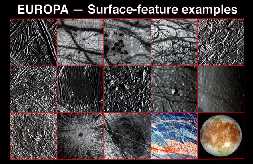Exploratour: NASA's Exploration for Life

Corel Photography
You may also want to read more about the effects of ultraviolet light, or light in general
- Warmth?
- It seems that the temperature on Earth (room temperature, so to speak) is just right for life. More importantly, chemical reactions take place at just the right speed in temperature ranges found on Earth. The speed at which chemical reactions take place is relevant to the formation and existence of life; freezing temperatures are OK, reactions take a longer time, and blisteringly hot (oven temperatures) are also suitable for chemistry, but really extreme temperatures such as -300 F or 5000 F won't work. Thus an habitable planet can't be too cold or life wont be abe to get started. Billions of years might pass before the relevant chemicals are exchanged because the chemical reactions take too long. And a planet can't be too hot or molecules wont stay together long enough to form solid matter.
- Oxygen?
- seems to be essential for life
- Water?
- water is a source of oxygen
- Protection from Ultra Violet rays
- Ultra Violet light breaks molecules apart
(Since this tour is meant to introduce you to portions of our site which you might not be aware of, you may read more details about what we just discussed by leaving the tour and using links provided at the bottom of the page. To continue with the tour press the forward link in the upper corner of this page).
This is page 1 of 20











